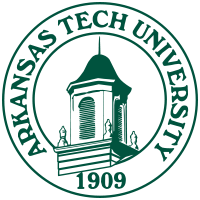What do they do?
Apply makeup to performers to reflect period, setting, and situation of their role.
Also known as:
Commercial Makeup Artist, Hair and Makeup Designer, Makeup Artist, Prosthetic Makeup Designer, Special Effects Makeup Artist, Special Makeup Effects Artist
-
35.5%
Change
Select a state to see its job growth rate ranking500Job Openings
Select a state to see its net job growth ranking
-
Empire Beauty School-Manhattan
New York, NY
-
Toni & Guy Hairdressing Academy-Worcester
Worcester, MA
-
International School of Cosmetology
Los Angeles, CA
-
Paul Mitchell the School-Houston
Houston, TX
-
Bella Capelli Academy
Monroeville, PA
Looking for colleges that offer a specific major? Use the College Match Tool to find your best-matched schools and discover your estimated Net Price!
- Doctorate or Professional Degree (<1%)
- Master's degree (4%)
- Bachelor's degree (18%)
- Associate's degree (9%)
- Some college, no degree (37%)
- High school diploma equivalent (27%)
- Less than high school diploma (4%)
People in this career often know a lot about:
- Customer and Personal Service - Knowledge of principles and processes for providing customer and personal services. This includes customer needs assessment, meeting quality standards for services, and evaluation of customer satisfaction.
- English Language - Knowledge of the structure and content of the English language including the meaning and spelling of words, rules of composition, and grammar.
- Administration and Management - Knowledge of business and management principles involved in strategic planning, resource allocation, human resources modeling, leadership technique, production methods, and coordination of people and resources.
People in this career often have talent in:
- Near Vision - The ability to see details at close range (within a few feet of the observer).
- Oral Comprehension - The ability to listen to and understand information and ideas presented through spoken words and sentences.
- Oral Expression - The ability to communicate information and ideas in speaking so others will understand.
- Arm-Hand Steadiness - The ability to keep your hand and arm steady while moving your arm or while holding your arm and hand in one position.
- Manual Dexterity - The ability to quickly move your hand, your hand together with your arm, or your two hands to grasp, manipulate, or assemble objects.
- Finger Dexterity - The ability to make precisely coordinated movements of the fingers of one or both hands to grasp, manipulate, or assemble very small objects.
- Visual Color Discrimination - The ability to match or detect differences between colors, including shades of color and brightness.
- Originality - The ability to come up with unusual or clever ideas about a given topic or situation, or to develop creative ways to solve a problem.
- Speech Recognition - The ability to identify and understand the speech of another person.
People in this career often do these activities:
- Apply makeup to alter or enhance appearance.
- Apply cleansing or conditioning agents to client hair, scalp, or skin.
- Assess skin or hair conditions.
- Review production information to determine costume or makeup requirements.
- Collaborate with others to determine production details.
- Manage budgets for personal services operations.
- Prepare operational reports or records.
- Order materials, supplies, or equipment.
- Design costumes or cosmetic effects for characters.
- Demonstrate activity techniques or equipment use.
- Teach health or hygiene practices.
- Groom wigs or hairpieces.
This page includes data from:

 Occupation statistics: USDOL U.S. Bureau of Labor Statistics Occupational Employment Statistics
Occupation statistics: USDOL U.S. Bureau of Labor Statistics Occupational Employment Statistics









